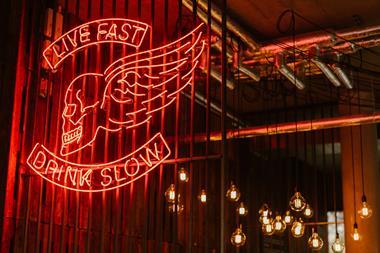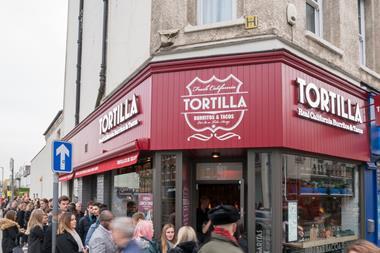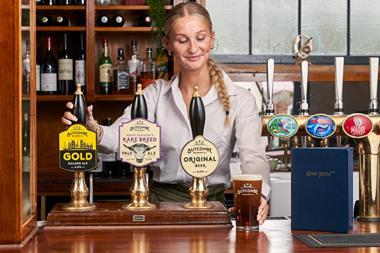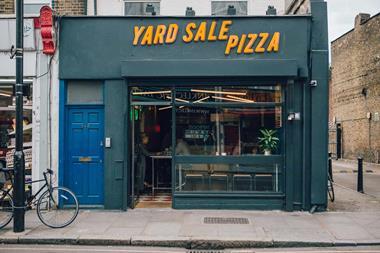A terrorist threat is not welcome subject matter for meetings but what happens if your business is affected by it. This is not something that can be planned for perfectly, but Mark Stretton gives you a head start
‘Crisis communications and terrorism’ is a subject about which nobody wants to talk. Or write. Especially for an industry such as hospitality, which in essence is about delivering fun, enjoyment and positive, life-affirming experiences.
Recent events, however, dictate otherwise. Reality requires the boards of UK hospitality businesses to factor in the possibility of such an event into their scenario and response planning. Risk management and communications officer types talk about the need to conduct regular crisis audits and reviews, considering the incidents and accidents that could visit an organisation, and the appropriate responses, that safeguard the business, its people and its reputation. Sadly, a terrorist incident, although remote, is now part of that conversation.
In considering any plan designed to address the unfolding of such an event, it’s important not to conflate separate things: preparation in the face of the current threat; an immediate response to a tragic incident; the communications requirements after such an event.
The huge challenge in addressing this issue is the difficulty of the subject matter. It’s not in most people’s nature to contemplate such scenarios and to do so in a business context, feels odd and possibly inappropriate. Companies have to find a way to talk about this issue without appearing alarmist or insensitive to a threat that is far bigger than any commercial pursuit. It also needs to be done without making staff feel unnecessarily vulnerable or anxious. Everything must be framed with a sense that this is something we should talk about, however unlikely and extreme.
Police advice
In the dark days of December, after the Paris attacks, UK police forces – most notably the Met – stepped up their communications with the public and with hospitality companies, with two key messages 1) what you can do to help us prevent an attack and 2) what to do in the event of an attack.
The first message was nothing new, and especially familiar to Londoners, calling for help with the intelligence-gathering process, urging customers and staff to identify and report suspicious behaviour. The second was the grim reality of what to do in an attack, with the advice amounting to run and hide. The advice was pushed out to the public through the usual channels, including social media and YouTube, and also into companies.
To what extent companies talk about this – what to do in an attack – with their own people, at a local level is clearly a judgment call. I am not an operator but my instinct is that staff should have a plan no matter how macabre it may seem: what will they do, where will they go? Anecdotally, it seems clear that hospitality companies were indeed liaising with their teams at venues designated as ‘high risk’ immediately prior to Christmas, urging them to run, hide and stay safe. High-risk venues were those sites in major conurbations, particularly in city centres and large-scale shopping complexes.
In the aftermath of an event that happens near a restaurant or bar, such venues probably have a role to play in the immediate care for people, and providing support to emergency services, as was seen in Paris. Again, given the unlikely nature of the actuality, to what extent this is discussed or even planned for is a judgment call.
Lean on the basics
Few people are qualified to know or write about the ways to deal with such an event. In preparing our organisations, we perhaps need, to a degree, to park the specifically grim and extreme nature of this threat, and revert to the basic principles of crisis management and response planning.
Every company in the eating and drinking-out market should have an established crisis response team, with clear roles and responsibilities. Do you and your colleagues know yours? This response team will have set procedures to identify the type and severity of a crisis – from a low-level local incident that could impact brand or reputation, up to the highest level – the severest incident scenario, and a set of planned responses.
Critically, this course of action – the immediate required actions, the cascading of information and the sequence of appropriate responses – needs to be well understood, and drilled. The robustness of this plan will deliver a synchronised response and help people to function in very difficult circumstances.
Most of our clients work with a basic PDF manual, which is regularly updated and circulated, with hard copies filed at each restaurant or venue. It includes contact information for key people and a step-by-step guide for what to do in the event of a range of situations.
Within the crisis response team, there will be clearly defined spokespeople, whose job it is to communicate with management and with colleagues, and also with shareholders and with the media, if appropriate (there will also be very clear rules around who does and who doesn’t communicate on behalf of the organisation).
Immediate response
In the event of the unthinkable, the situation confronting businesses and their people will, of course, be overwhelming. In such a scenario, any notion of what needs to happen from an organisational perspective of course gives way to the basic human responses and needs. While us communications professionals can have a habit for evangelically banging on about the importance of it under all and any circumstances, if an event is going to cast the rigour of professional comms aside it’s one that carries this sort of threat.
Normal crisis planning and communications responses are designed to protect an organisation’s people, business and reputation. In the event of an attack, this goes out the window, with the exception of people – it’s about duty of care and delivering a support structure to those impacted.
For CEOs, and other senior executives in large organisations, the situation must at least be contemplated. Is the organisation ready for every type of eventuality, including this? How will the company deliver the necessary duty of care for affected and traumatised staff? Is the business continuity plan in place? On a human level, as the CEO, are you ready to lead your organisation through this? And to put your arm around a colleague, face cameras and make a call to a loved one’s spouse or parent?
The reality
The threat exists and planning is key. But unlike most crises, knowing exactly what the right responses and actions will be, ahead of an incident, is impossible to envisage. The planning has to centre on establishing a team that will convene, be in regular contact and that will respond and take decisions as circumstances require, in real time, in difficult circumstances. And that every individual understands their role in response to any crisis.
Mark Stretton is a former editor of M&C Report, and managing director of Fleet Street Communications, a leading trade and corporate communications firm that specialises in the food, drink, leisure and hospitality industries. Email mark@fsc.uk.com





































